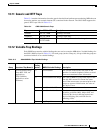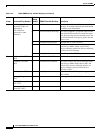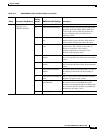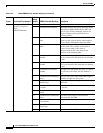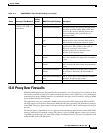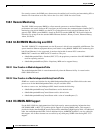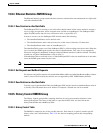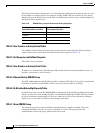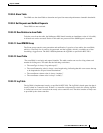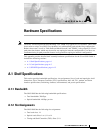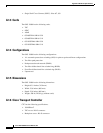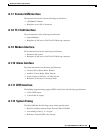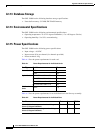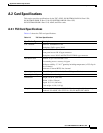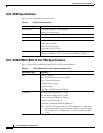
13-15
Cisco ONS 15600 Reference Manual, R7.2
Chapter 13 SNMP
13.8.5 History Control RMON Group
13.8.5.8 Alarm Table
The NMS uses the alarmTable to determine and provision network performance alarmable thresholds.
13.8.5.9 Get Requests and GetNext Requests
These PDUs are not restricted.
13.8.5.10 Row Deletion in alarmTable
To delete a row from the table, the SetRequest PDU should contain an alarmStatus value of 4 (invalid).
A deleted row can be recreated. Entries in this table are preserved if the SNMP agent is restarted.
13.8.5.11 Event RMON Group
The Event group controls event generation and notification. It consists of two tables: the eventTable,
which is a read-only list of events to be generated, and the logTable, which is a writable set of data
describing a logged event. The ONS 15600 implements the logTable as specified in RFC 2819.
13.8.5.12 Event Table
The eventTable is read-only and unprovisionable. The table contains one row for rising alarms and
another for falling ones. This table has the following restrictions:
•
The eventType is always “log-and-trap (4)”.
•
The eventCommunity value is always a zero-length string, indicating that this event causes the trap
to be despatched to all provisioned destinations.
•
The eventOwner column value is always “monitor.”
•
The eventStatus column value is always “valid(1)”.
13.8.5.13 Log Table
The logTable is implemented exactly as specified in RFC 2819. The logTable is based upon data that is
locally cached in a controller card. If there is a controller card protection switch, the existing logTable
is cleared and a new one is started on the newly active controller card. The table contains as many rows
as provided by the alarm controller.



